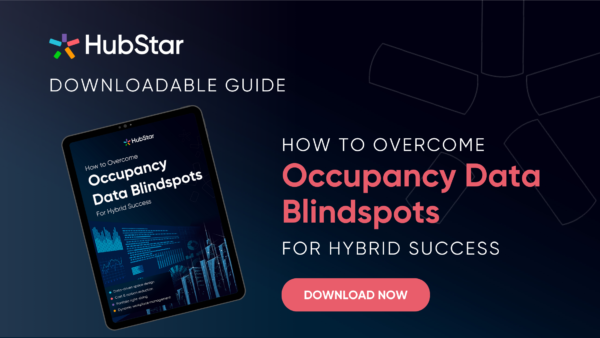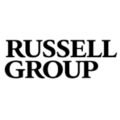How to Optimize Your Corporate Real Estate Portfolio

If you’re a corporate real estate leader, you’ve probably been tasked with a real estate portfolio resize or optimize.
You’re not alone – 87% of corporate real estate leaders say optimizing their portfolio is their number one priority.
Time is of the essence when deciding how cut costs and get more from your corporate real estate portfolio, since many CFOs are anything but optimistic about 2024’s economic outlook.
CRE leaders have three options for each asset in their portfolio: drop it, keep it or optimize it.
This post is about the latter.
What does it mean to optimize your corporate real estate portfolio?
Optimizing your portfolio means you’re holding onto every asset in your portfolio, whether leased or owned, but you’re making sure each one is operating as efficiently as possible. Thus, you’re getting maximum value from every square inch of space.
The result is a reduction in the financial and environmental costs of maintaining your current portfolio, as well an improvement in the workplace experience it offers.
Optimizing your real estate portfolio is a lot like looking at your credit card bill for the first time in a while and realizing you forgot to cancel that Amazon Prime subscription you signed up for 6 months ago to nab free delivery one time. At $14.99 per month, that’s a savings of almost $200 per year.
Dropping assets in your real estate portfolio would be like cancelling the entire credit card – which might have some irreversible consequences in the future.
Why should you optimize your corporate real estate portfolio?
The decision to optimize instead of drop can be the right one as a result of circumstance. Perhaps you’re locked into leases for the next year and won’t be able to sublease.
But ultimately, optimizing your real estate portfolio is never a bad idea. That’s because it helps CRE leaders get the maximum value out of every asset before the decision is made to downsize or right size. Optimizing should arguably be the first step before any decisions to drop or acquire are made.
Even with tech giants dropping office space left right and center, holding on to certain assets might prove to be a good idea in the long run, even if that isn’t completely clear now. In London, for example, J.P Morgan’s research sees demand for prime office space surging ahead 38% by 2030.
Spreading some magical optimization sauce around could make keeping your real estate portfolio more cost-effective in the long run.
Here’s what CRE leaders can do to make that happen.
1. Look at broader business objectives
The offices that make up your corporate real estate portfolio are where the magic happens. They either hamper or hinder employees as they work towards achieving organizational goals.
That’s why quarterly and yearly objectives shape the workplace, and the workplace shapes how those objectives are achieved.
Going back to the drawing board to work out exactly where corporate real estate fits into broader business objectives should always be the starting point for optimizing. That’s because it provides guidance and reassurance that any changes to workspaces or processes are aligned with where the business is going.
2. Gather floor plans for your entire real estate portfolio

Pull in up-to-date floor plans that include every conference room and hallway, down to the square inch. Every space, regardless of how small it might look in the grand scheme of things, is a spot for potential optimization. It might not seem like much in isolation, but across dozens of offices the cost savings really add up.
3. Measure space utilization for every floor plan
Overlay each floor plan with space utilization data for the corresponding zone or neighborhood. Find the areas with low utilization rates across your entire portfolio – these are your optimization zones.
Lining up floor plans with utilization data helps you create a heatmap of how people use every part of your real estate portfolio, and will help you make sure that any changes to workspaces will fit into the flow of work without disrupting the workplace experience.
Don’t forget to look at daily and weekly utilization rates to understand patterns and trends – it could be that optimization hotspots only occur on certain days or weeks.
4. Rightsize use of energy and facilities management
Those optimization zones you pinpointed in the previous step? They’re probably the areas where you can throttle down use of heating, cooling and lighting. For example, it’s apparent that the third floor of a building only has 5% utilization rates on Fridays. Close off the third floor entirely on Fridays, and funnel the few employees using it onto different floors. If you’re repeating this optimization across multiple buildings, the result is a significant cost savings and an improved employee experience, since the third floor isn’t making people wish they stayed home instead of coming in on a Friday.
Optimization zones are also the perfect place to rightsize investment in facilities management. Let’s say three office buildings have far lower utilization rates on Mondays and Fridays than previously expected. You could use this data to order the right amount of food for the cafeteria on these days, and adjust staffing so it’s proportionate to the number of people eating breakfast and lunch in the office.
Rightsizing use of energy and facilities management cut costs and makes the whole real estate portfolio more sustainable by using less power and creating less waste.
5. Repurpose underutilized spaces
Optimizing corporate real estate can also mean changing the way it functions. People tend to come into the office to connect and collaborate with their coworkers, and that means that if office layouts haven’t changed much since 2019, chances are there’s far too much space for individual desks.
Repurposing space to offer employees the functionality they need skyrockets corporate real estate ROI. That’s because once word spreads that office layout gives everyone what they need to do their best work, people will start flocking back.
Measuring workplace occupancy and space utilization data fuels portfolio optimization.
But the problem is, many workplace leaders are relying on badge swipes and sensors as their only data sources, leading occupancy blind spots across the portfolio.
Download this guide for a deep dive into why these blind spots occur, how they’re impacting decision making and how to fix them.
How to overcome occupancy blind spots for hybrid success
If you're working towards an improved hybrid workplace, the workplace data you're using could be holding you back. Download this guide to find out more.

Share this post






















